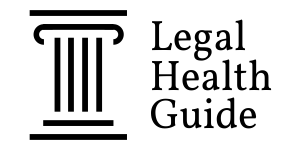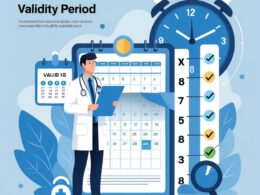Medical legal review touches almost everything you see in healthcare, from drug ads to device packaging. Medical legal review is a process where medical, legal, and regulatory experts examine healthcare content to make sure it’s accurate, follows regulations, and protects both patients and companies from risk.

This review process matters a lot, especially since pharmaceutical companies have paid over $12 billion in lawsuit settlements in the last twenty years. Most of those cases came from inaccurate marketing and product labels.
If you work in healthcare marketing, pharma, or legal, understanding how this process works can help you avoid expensive mistakes and regulatory trouble.
The stakes are high in healthcare communications. Bad info can hurt patients, rack up fines over $100 million, and wreck brand reputations.
Key Takeaways
- Medical legal review checks healthcare content for medical accuracy, legal compliance, and regulatory approval before it’s published
- Three groups of experts review content from medical, legal, and regulatory angles
- Proper review helps prevent patient harm, lawsuits, and reputation damage
Defining Medical Legal Review

Medical legal review acts as a quality control step that makes sure healthcare content meets tough accuracy, compliance, and legal standards before anyone sees it. Medical, legal, and regulatory experts work together to prevent costly mistakes and keep patients safe.
Overview of Medical Legal Review
Medical legal review protects both medical professionals and patients. It examines healthcare content for legal and medical problems.
You’ll see this review system mostly in pharma, biotech, and life sciences companies.
The process involves three main groups. Medical reviewers check scientific accuracy and current research. Legal reviewers look for regulatory problems and unsupported claims. Regulatory affairs specialists make sure materials stay on-label and follow approved documents.
Medical legal review covers everything from posters to packaging designs. Reviewers need to know medical terms, procedures, and standards of care. They look at medical records, test results, and treatment plans to build a full case history.
Your content gets a detailed check to prevent inaccurate marketing and labeling. This helps avoid the huge fines companies have paid for compliance failures.
Terminology: MLR, MLR Review, Med-Legal Review
You’ll run into several terms for this process. MLR review stands for medical, legal, and regulatory affairs review. It’s a must in healthcare marketing to make sure ads and promotional content are accurate and compliant.
Med-legal review is getting feedback and approval from medical and legal reviewers, often using workflow software. Regulatory affairs specialists often work closely with legal reviewers here.
Sometimes you’ll see CMLR review. The C can mean “compliance” or “commercial.” If you need content for different markets, local compliance specialists will review it.
PRC meetings are promotional, process, or protocol review committee meetings. They usually happen once or twice a month, where marketers and MLR reviewers go over all current content.
Historical Context and Evolution
The medical legal review process grew out of tragic pharmaceutical incidents. The thalidomide scandal in the 1950s and 1960s changed everything.
Thalidomide, sold as Distaval in 1958, was advertised as completely safe for pregnant women. It took five years to link it to birth defects, but the harm was already done.
After this, pharmaceutical companies introduced stricter testing and tighter review processes for marketing content.
The industry moved from paper-based reviews to email systems. Now, many companies use cloud-based collaboration tools and special review software.
Companies keep looking for better ways to move projects faster and avoid endless email chains. Modern MLR software makes the process more transparent and encourages better teamwork.
Purpose and Importance of Medical Legal Review

Medical legal review bridges healthcare practice and legal requirements. It can shape case outcomes and directly affect patient safety.
This process helps you spot negligence, stay compliant, and strengthen legal arguments in medical malpractice cases.
Ensuring Legal and Medical Compliance
Medical legal review helps you make sense of complicated healthcare and pharmaceutical regulations. You need to follow federal laws like HIPAA and state standards for medical practice.
The review makes sure your documentation meets legal requirements. It can help you find missing records or incomplete patient histories that could weaken your case.
Key compliance areas:
- Patient privacy protections
- Medical record accuracy
- Licensing requirements
- Industry-specific rules
Legal review checks that your medical evidence follows proper chain of custody. You need this to use records as evidence in court.
Pharma companies rely on medical legal review to make sure drug trial documents meet FDA standards. You can catch compliance problems early.
Protecting Patient Safety and Reducing Risk
Medical review can spot care patterns that hint at negligence or poor treatment. You might catch problems before they turn into malpractice claims.
You reduce risk when you analyze records for safety issues. Finding problems early lets healthcare providers improve and avoid future incidents.
Medical legal review protects patients by:
- Finding medication errors
- Catching diagnostic mistakes
- Checking treatment protocols
- Analyzing adverse events
You can use review results to set up better safety protocols in healthcare facilities. This proactive approach lowers liability and helps patients.
Healthcare organizations benefit from systematic review processes that catch problems before they explode. When medical and legal teams work together, you get a culture of safety.
Impact on Case Outcomes
Medical record review gives legal teams a stronger case by offering detailed analysis of evidence. Understanding the medical facts helps you build a better case.
Case outcomes improve when you have thorough medical legal review. Attorneys win more malpractice cases when they can clearly show negligence with medical analysis.
Review impacts:
- Stronger evidence – Clear facts support legal arguments
- Better settlements – Detailed analysis shows case value
- Improved expert testimony – Medical experts can explain issues clearly
You avoid costly mistakes when you spot weaknesses in your case early. Medical legal review helps you decide if litigation is worth it or if you should settle.
The review process helps you measure damages accurately in personal injury and malpractice cases. You can show the full impact of medical negligence with proper documentation.
Key Stakeholders in the Medical Legal Review Process

The MLR review process brings together three main groups. Legal professionals focus on risk, medical experts check scientific accuracy, and regulatory specialists make sure everything follows industry standards.
Role of Attorneys
Attorneys act as the main gatekeepers for legal compliance in medical legal review. They examine all promotional materials to find liability risks before anything goes public.
Your legal team checks content against federal regulations and industry rules. They look for unsupported claims that could lead to lawsuits or penalties.
Key Legal Review Areas:
- Claims and evidence
- FDA advertising rules
- Risk in promotional statements
- Company policy compliance
Legal reviewers help companies dodge massive fines from inaccurate materials. They work with regulatory specialists for full compliance.
Attorneys also review disclaimer language and fair balance. They judge if promotional content could mislead providers or patients about benefits and risks.
Involvement of Medical Professionals
Medical professionals make sure content is scientifically accurate and matches current research. They add clinical expertise that legal and regulatory teams just don’t have.
Medical reviewers check factual accuracy and keep content aligned with the latest data. They verify dosing, side effects, and treatment details.
Medical Review Team Members:
- Medical Directors – Oversee clinical standards
- Product Managers – Match content to product specs
- Scientific Consultants – Offer specific expertise
- Medical Device Managers – Review device content
The medical team checks if claims are backed by peer-reviewed studies. They look for alignment with current practice and new research.
Medical professionals also review visuals like diagrams and illustrations. They make sure these accurately show medical concepts.
Regulatory Affairs Specialists
Regulatory affairs specialists make sure content stays “on-label” and matches approved product labeling. They manage the link between marketing and regulatory approvals.
Regulatory teams create dossiers and handle approvals with local authorities. They check that promotional content matches pre-approved documents.
Regulatory Affairs Roles:
- Regulatory Affairs Managers – Oversee compliance
- Global Labeling Managers – Keep international standards consistent
- Regional Regulatory Strategists – Handle local needs
Regulatory specialists review claims against approved labels. They make sure marketing doesn’t go beyond regulatory approvals or make off-label claims.
They work with legal teams if content needs regulatory interpretation. Regulatory affairs specialists decide when materials need extra agency review before release.
The Medical Legal Review Process

The medical legal review process has three main steps that make sure healthcare content meets all safety and compliance rules. Each stage needs specific documentation and different teams review the content from medical, legal, and regulatory perspectives.
Initiating the Review
You kick off the MLR review process by submitting your content through a workflow system. This covers marketing content, product labels, and educational materials.
Your team should provide all documentation with the initial submission. That means the content itself, target audience, and how you plan to use it.
You also need to say which markets will use the content. Different regions have different rules that change the review process.
Reviewers from each area get assigned to the content. Medical reviewers check scientific accuracy. Legal reviewers look at compliance risks. Regulatory reviewers make sure content stays on-label.
- Complete content files
- Target audience info
- Geographic markets
- Timeline needs
- Previous version history (if you have it)
Stages and Workflows
Your content passes through three main review stages, one after the other. The medical review comes first, focusing on scientific accuracy and clinical data.
Medical reviewers like Medical Directors and Scientific Consultants check that your claims match current research. They look at whether every statement aligns with clinical evidence.
Next comes the legal review, which examines compliance risks. Legal teams scan your content for unsubstantiated claims.
After that, your content enters regulatory review. Regulatory affairs specialists compare your work against approved product documents to keep everything on-label.
You might need to join PRC meetings during this process. These monthly meetings bring marketers and reviewers together to discuss content.
Every stage can end with approval, requests for changes, or outright rejection. You have to address all feedback before moving forward.
Documentation and Reporting
Reviewers give you detailed feedback at each stage. This feedback gets collected in one document that tracks comments and changes.
Your team needs to respond to every comment, either updating the content or explaining your choices. All decisions get logged for an audit trail.
Final approval documents include signatures from all three review teams. This protects your company when publishing content.
You also get a summary report showing the review timeline and any issues. These reports help you spot patterns and improve future reviews.
Standard documentation includes:
- Reviewer feedback forms
- Change tracking logs
- Final approval certificates
- Timeline reports
- Risk assessment summaries
Applications Across the Healthcare and Legal Sectors

Medical legal review covers a lot in healthcare litigation, regulatory compliance, and content approval. These reviews shield organizations from liability and help keep medical documentation and promotional materials accurate.
Medical Malpractice and Negligence Cases
Medical malpractice cases depend on expert medical reviewers. Attorneys count on these experts to analyze patient records and spot possible negligence.
The review focuses on a few main areas:
- Standard of care – Did the provider follow accepted practices?
- Causation – Did the provider’s actions actually harm the patient?
- Documentation quality – Are the records complete and accurate?
Legal professionals use these reviews to see if there’s a real malpractice claim. Victims can often get free initial reviews to check if their case is worth pursuing.
Expert reviewers dig into treatment timelines, medication errors, and surgical complications. They compare the actual care to established standards.
Attorneys use this analysis to build stronger cases. Healthcare providers also gain insight into liability issues before things escalate.
Healthcare Marketing and Promotional Review
Healthcare organizations have to keep marketing materials in line with tough regulations. Medical legal review checks promotional content for accuracy and legal compliance.
The review looks at all sorts of content:
| Content Type | Review Focus |
|---|---|
| Patient brochures | Medical accuracy, claims verification |
| Website content | FDA compliance, truthful advertising |
| Social media posts | Professional standards, patient privacy |
| Treatment advertisements | Evidence-based claims, risk disclosures |
Reviewers confirm that health claims rely on scientific evidence. They make sure materials don’t include false or misleading statements about treatments.
Legal experts handle FDA rules and state advertising laws. Medical professionals check clinical accuracy and proper terminology.
This kind of review prevents expensive regulatory problems. It also keeps your organization’s reputation safe and patient trust intact.
Pharmaceutical Industry Compliance
The pharmaceutical industry leans heavily on medical, legal, and regulatory review. These MLR reviews make sure drug marketing materials meet strict standards.
Key review components:
- Medical accuracy of drug info
- Legal compliance with FDA rules
- Regulatory adherence to labeling
- Risk-benefit balance in claims
AI is shaking up MLR review processes, making them faster and more efficient. This means pharmaceutical companies can get compliant materials to market sooner.
Regulatory affairs specialists team up with medical and legal experts. They make sure all promotions stick to FDA guidelines and industry norms.
The review process helps companies avoid harsh regulatory penalties. It also protects patients by making sure drug info reaching healthcare providers is accurate.
Content Creation and Educational Materials
Medical legal review isn’t just for marketing. You need it for training materials, patient education, and professional publications.
Educational content gets a thorough fact-check and legal review. Medical experts check clinical accuracy, while legal professionals ensure compliance with healthcare regulations.
Educational materials needing review:
- Patient instruction sheets and discharge summaries
- Medical training curricula and continuing education programs
- Healthcare policy documents and procedure manuals
- Research publications and clinical study materials
This review process prevents misinformation and liability headaches. Patients get better information for making decisions.
Content creators work with reviewers throughout development. This back-and-forth leads to higher quality materials that meet professional and regulatory standards.
Best Practices and Challenges in Medical Legal Review

Strong teamwork between medical experts and legal professionals is essential for successful medical legal review. You also need to follow healthcare regulations and use technology wisely to keep things moving.
Collaboration and Interdisciplinary Approach
Clear communication between medical experts, attorneys, and regulatory teams makes reviews effective. Medical professionals translate clinical data into language legal teams can actually use.
Your review team should include doctors, nurses, and specialists familiar with the issues in your case. These experts work alongside lawyers who know how to present medical evidence.
Regular team meetings keep everyone on the same page. Assign clear roles to each team member right from the start.
Cross-training helps a ton. When lawyers understand basic medical concepts and medical experts get legal requirements, your reviews just get better.
Document sharing systems let your team collaborate without confusion. Everyone needs access to the same records and information.
Regulatory and Ethical Considerations
You have to follow HIPAA compliance when working with patient records. That means using secure systems and limiting access.
Your MLR review process should log who accessed records and when. Audit trails protect privacy and help with regulations.
Regulatory affairs teams often oversee compliance. They make sure your process follows all laws and guidelines.
Don’t use free AI tools or unsecured platforms for reviewing medical records. These can break HIPAA rules and risk patient privacy.
Consent and authorization rules are different in each state and case. You need proper legal authority before accessing patient records.
Ethical guidelines say you should only use the medical info necessary for your case. Grabbing more than you need crosses a line.
Technological Solutions and Efficiency
Modern tech helps you organize and analyze huge piles of medical records faster than old manual methods. Digital platforms built for healthcare and legal work offer secure document management and collaboration tools.
AI-assisted tools can flag key medical events and build chronologies, but human experts always need to check AI findings. Tech can help, but it doesn’t replace real medical judgment.
Secure collaboration platforms let your team work together from anywhere. These tools track changes and comments so nothing gets lost.
Visual presentation tools make it easier to explain medical concepts to juries and judges. Interactive timelines and medical illustrations help clarify your evidence.
Cloud-based systems with security certifications let your team share documents quickly. You need platforms with Business Associate Agreements and strong encryption.
Electronic health records integration puts information in order. You can spot patterns and inconsistencies in care more easily.
Frequently Asked Questions

Medical-Legal Review involves specific compliance steps, committee work, and software that streamlines pharmaceutical operations. These reviews shape how medical promotional materials get approved and reach healthcare pros.
How does the Medical-Legal Review (MLR) process in pharmaceuticals ensure regulatory compliance?
The MLR process builds in checkpoints to make sure all medical content follows FDA rules. Your legal team reviews claims for accuracy, and medical professionals check the science.
Each piece of promotional material gets a systematic look. Reviewers check drug labeling and make sure fair balance requirements are met.
Documentation tracks every change during review. Your company keeps detailed records showing how materials line up with regulations.
Risk assessment is a big part of compliance. Teams look for potential regulatory issues before anything goes public.
What are the typical steps involved in conducting a Medical-Legal Review within the healthcare sector?
Your review process starts with content submission and classification. Medical writers or marketing teams upload materials to the review system.
Medical review comes next, digging into clinical data and accuracy. Board-certified physicians check that medical claims match research and labeling.
Legal review follows, looking at compliance and liability risks. The legal team checks advertising rules and disclaimers.
Final approval needs sign-off from both medical and legal reviewers. Some companies add regulatory affairs review as a final step.
What are the responsibilities of a Medical Review Committee within a pharmaceutical company?
Your Medical Review Committee sets review standards and approval criteria. Board-certified physicians offer medical legal consulting through the whole review process.
Committee members evaluate the clinical evidence behind promotional claims. They check for scientific accuracy and proper context.
The committee develops internal guidelines for consistent reviews. Your team creates templates and checklists to standardize things.
Training and education also fall under the committee. Members make sure reviewers stay current with changing rules and medical standards.
How is MLR software utilized to streamline the review process in medical and legal contexts?
MLR software automates workflow and tracks progress. Your system assigns materials to reviewers based on topic and content type.
Digital annotation tools let reviewers comment right on documents. This cuts out paper and creates searchable comment histories.
Automated compliance checks flag possible regulatory issues. Your software can spot missing elements or prohibited claims before a person even looks.
Reporting dashboards show review timelines and bottlenecks. Management can track performance and resource use.
What are the best practices for managing MLR processes when using Veeva or similar platforms?
Your Veeva setup should match your company’s workflow. Custom fields and approval paths need to fit your internal standards.
User permissions should restrict access based on roles and topics. The system should block unauthorized changes to approved materials.
Regular training helps reviewers use the platform well. Teams need a clear process for versioning and resolving comments.
Connecting with other business systems cuts down on duplicate work. Your platform should link with content management and customer relationship systems.
In what ways does Medical-Legal Review impact the approval and dissemination of medical promotional materials?
MLR approval decides which materials reach healthcare professionals. Your review process also sets the pace for launching marketing campaigns.
Medical record reviews strengthen legal arguments and support successful case outcomes in promotional material disputes. Good documentation helps protect against regulatory challenges.
Review feedback shapes how you present medical information. Reviewers might ask for claim modifications or request extra context for tricky topics.
Approval status changes which distribution channels you can use and who you can target. Sales teams need MLR-completed materials before they talk to physicians.









